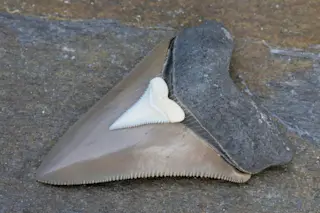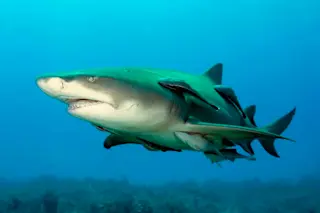What did the extinct bird Pelagornis sandersi eat? With a wingspan up to 24 feet and jaws lined with spiky, toothy projections, anything it wanted.
The massive seabird, known from a 25-million-year-old fossil excavated in South Carolina, has the largest wingspan of any bird ever found. It edges out the extinct South American condor-like Argentavis magnificens (with an estimated wingspan of 20 feet), and it dwarfs the largest living airborne bird, the wandering albatross (11-foot wingspan).
Some 25 million years ago, Pelagornis sandersei (top left) roamed the skies. Its wingspan stretched up to 24 feet (about 7 meters), more than double today's largest flying bird, the wandering albatross (bottom right). (Credit: Liz Bradford/Bruce Museum)
Liz Bradford/Bruce Museum
Because the fossil was in excellent condition, paleontologist Daniel Ksepka had enough data to re-create the bird’s flight style through computer modeling.
The results, published in the Proceedings of the National Academy of ...















